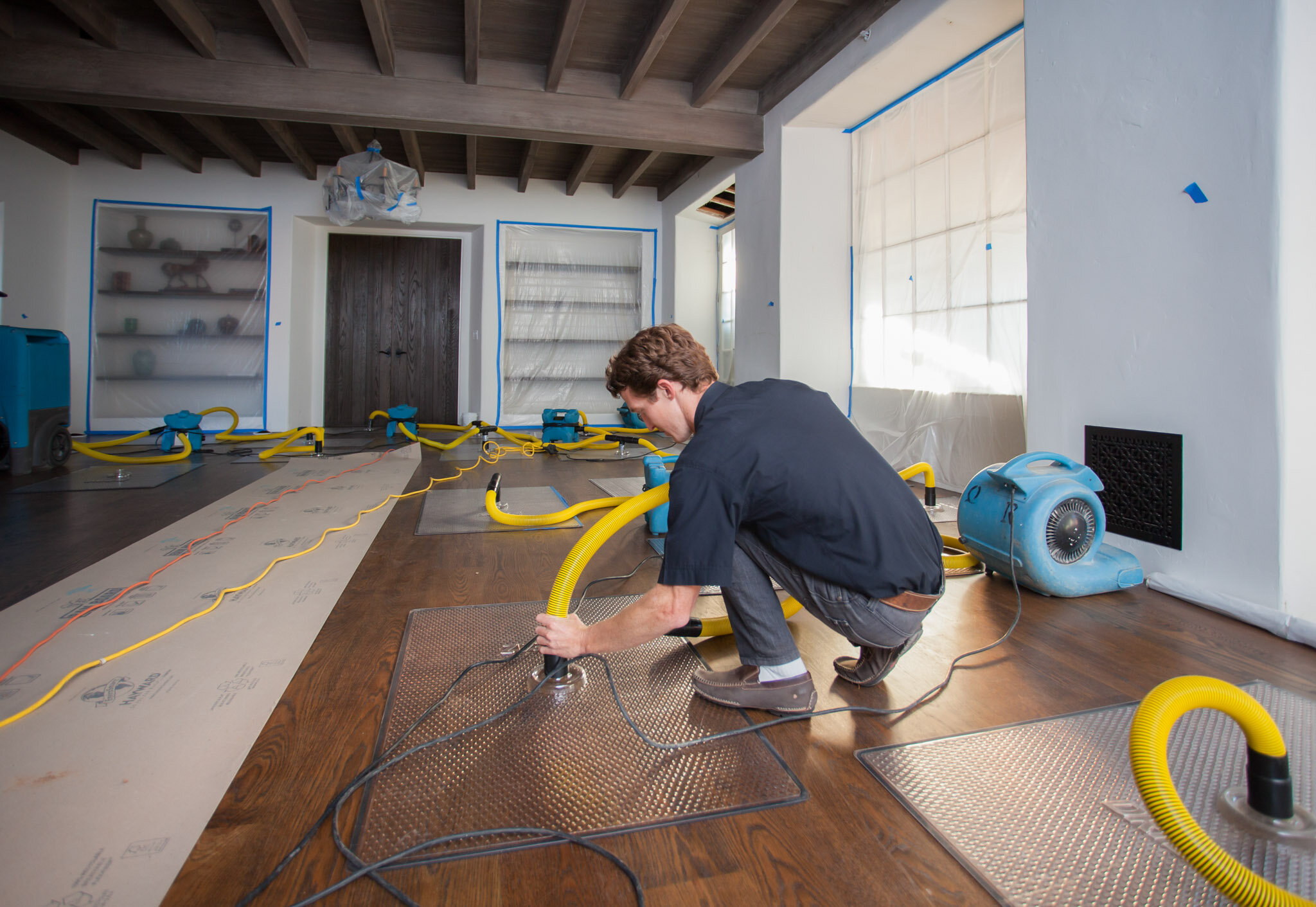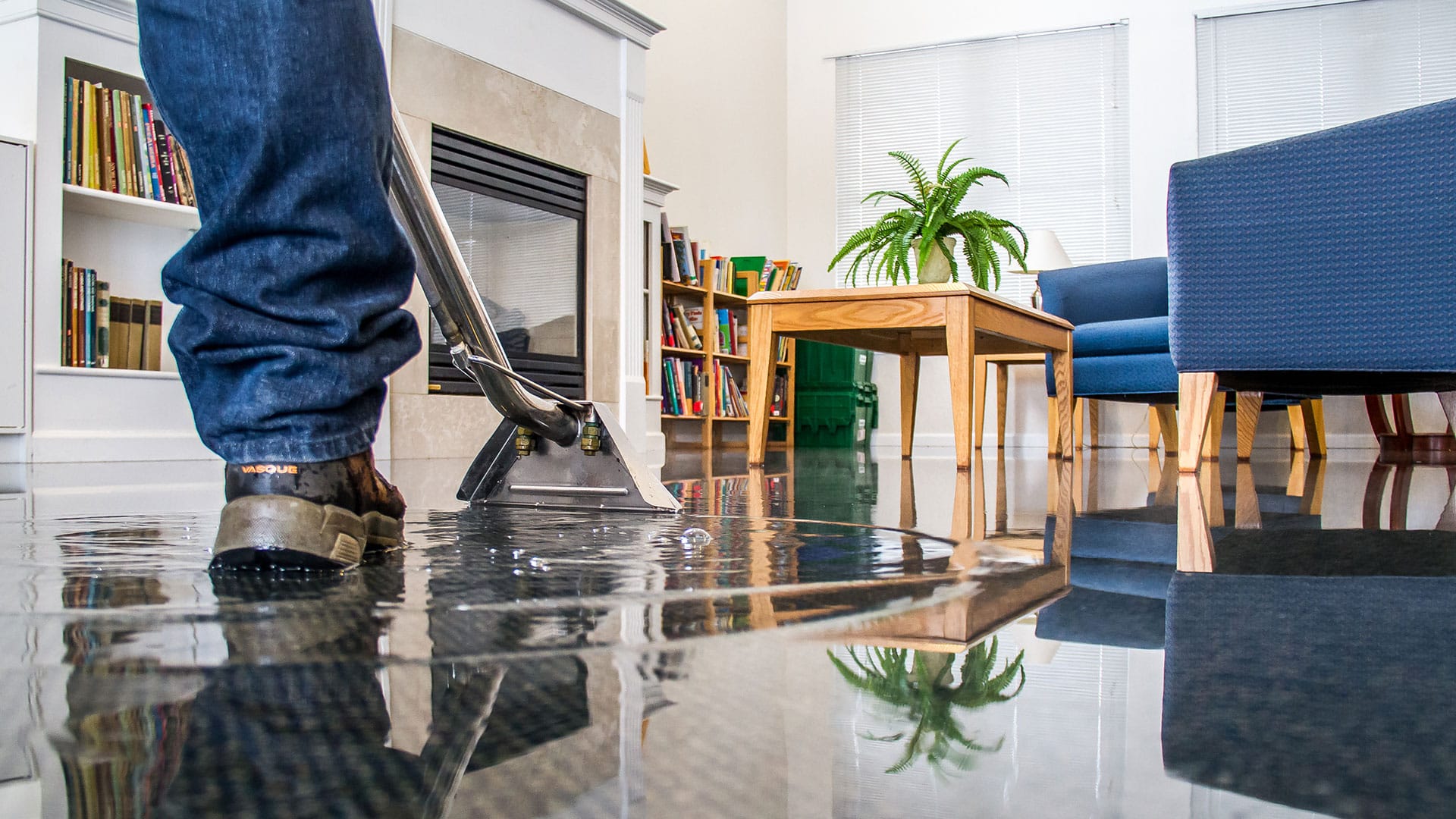Expert-recommended strategies for fast Water Damage Restoration
Wiki Article
Water Damage Restoration 101: Comprehending the Process and Price
Water damage can strike all of a sudden, leaving property owners in a state of confusion. Comprehending the repair procedure is essential for effective recovery. From assessing the damage to selecting the best company, each action impacts the general end result and price. Variables such as the kind of water damage and urgency also play a considerable role. What are the particular techniques used in remediation, and how can one prepare for potential expenses?Types of Water Damage
Water damage can emerge from different resources, each providing special difficulties for remediation. The three key kinds of water damage are classified based on contamination degrees: tidy water, grey water, and black water. Tidy water originates from resources like busted pipelines or rainwater, posing minimal health threats. Gray water, which consists of wastewater from sinks or washing makers, has pollutants that may create pain or disease if ingested. Black water, one of the most dangerous category, originates from sewer or floodwaters, containing hazardous microorganisms and microorganisms. Each type requires particular reconstruction methods and precaution to properly attend to the damage and mitigate wellness risks. Recognizing these distinctions is vital for property owners and specialists associated with the water damage reconstruction process.First Assessment and Examination
A detailed initial analysis and inspection are crucial actions in the water damage reconstruction process. This stage begins with a professional assessing the level of the damage, recognizing the source of the water invasion, and figuring out the kind of water involved - Water Damage Restoration. Service technicians make use of specific devices to determine wetness levels in different materials, such as walls, floors, and furniture. Additionally, they assess structural integrity and prospective carcinogen, consisting of mold and mildew growth. The findings from this inspection inform the restoration strategy, leading needed activities and resource allotment. Accurate documentation of the damage is important for insurance coverage claims and future reference. Overall, this preliminary analysis prepares for efficient repair, making sure a comprehensive response to the specific scenario available

Water Extraction Techniques
Adhering to the first evaluation, effective water removal strategies are utilized to reduce damage and prevent more problems. These techniques entail the use of specialized devices such as industrial-grade vacuums and submersible pumps. The option of method relies on the quantity of water existing and the sort of materials affected. For standing water, submersible pumps are generally made use of for fast elimination, while vacuums are ideal for drawing out water from carpets and furniture. Additionally, progressed methods like water removal floor coverings may be used for hard-to-reach areas. The goal is to get rid of as much water as possible, decreasing the possibility for mold and mildew development and structural damage. Trigger and efficient water removal is vital in the general water damage repair process.Drying Out and Dehumidification Process
When the water removal is full, the drying and dehumidification process comes to be essential to recovering the affected area. This stage normally uses industrial-grade dehumidifiers and air movers to effectively decrease wetness degrees. The dehumidifiers attract in moist air, eliminating excess moisture, while air moving companies flow air to increase evaporation. Surveillance tools is frequently used to track moisture and temperature level degrees, ensuring suitable drying out problems. The period of this procedure can differ relying on the level of the water damage and ecological variables. It is necessary to completely dry all impacted materials, consisting of wall surfaces, floor covering, and home furnishings, to avoid mold and mildew development and architectural damage. Correct implementation of this action is crucial for an effective repair result.Cleansing and Sanitizing Afflicted Locations

Preliminary Analysis and Inspection
Prior to beginning any kind of repair efforts, a site here complete preliminary assessment and inspection of the influenced areas are vital for effective cleansing and sterilizing. This process entails determining the extent of water damage, establishing the resource of the water breach, and assessing the products impacted. Inspectors generally search for indications of mold development, structural stability concerns, and damaged items. The evaluation likewise includes checking dampness degrees using specific tools to guarantee no concealed water pockets continue to be, as these can result in further difficulties. Documenting the searchings for is important for preparing the following action in the reconstruction procedure. An in-depth preliminary analysis makes it possible for remediation experts to create a targeted strategy for effective cleaning and sanitizing, inevitably lessening damage and wellness threats.Cleansing Strategies and Products
Reliable cleansing and disinfecting of water-damaged locations call for a selection of items and methods customized to the details materials affected. For permeable surfaces like drywall and carpeting, extraction techniques are important to remove excess wetness, adhered to by deep cleansing with specialized detergents. Non-porous products such as tile or metal can be cleaned making use of commercial-grade cleansers that successfully eliminate pollutants. Steam cleaning is an additional efficient method, especially for rugs and upholstery, as it makes use of heats to get rid of bacteria and mold and mildew. In addition, eco-friendly items are progressively popular for their safety and efficiency. Inevitably, choosing the appropriate cleansing techniques and products not only guarantees prompt sanitation yet additionally help in stopping additional damage and carcinogen connected with water invasion.Sanitization and Disinfection Techniques
When attending to water damage, correct sanitization and sanitation approaches are necessary to assure the safety and wellness of the damaged setting. After first cleansing, surfaces must be treated with ideal disinfectants to remove pathogens, mold and mildew, and bacteria that prosper in moist problems. Usual techniques consist of using EPA-approved chemical disinfectants, which can be used through spraying or cleaning techniques. In addition, ultraviolet (UV) light systems can successfully sanitize areas by neutralizing microbes without extreme chemicals. The choice of approach frequently depends upon the sort of products impacted and the level of contamination. Eventually, extensive sanitization not only brings back a safe space but likewise helps avoid future wellness threats connected with remaining wetness and mold and mildew development.
Repair Work and Restoration Options

Elements Influencing Restoration Costs
The level of water damage straight affects the remediation costs home owners can expect to incur. Variables such as the source of the water, the duration of direct exposure, and the affected materials substantially influence prices. For circumstances, tidy water damage from a broken pipeline is usually less expensive to bring back compared to damage triggered by sewage. Additionally, the level of contamination dictates the requirement for specialized cleaning and disposal solutions, further boosting expenditures. Geographic location additionally contributes, as regional labor rates and schedule of reconstruction services can differ. The seriousness of the action impacts expenses; quicker treatments typically lead to lower overall expenditures by protecting against more damage. Understanding these factors is vital for homeowners when approximating reconstruction expensesThe three primary types of water damage are classified based on contamination degrees: tidy water, grey water, and black water. A thorough first analysis and assessment are essential steps in the water damage remediation procedure. For standing water, completely submersible pumps are generally used for fast elimination, while vacuum cleaners are perfect for drawing out water from carpets and upholstery. The extent of water damage directly affects the remediation sets you back homeowners can anticipate to sustain. Tidy water damage from a broken pipe is generally less pricey to bring back contrasted to damage triggered by sewage.
Report this wiki page